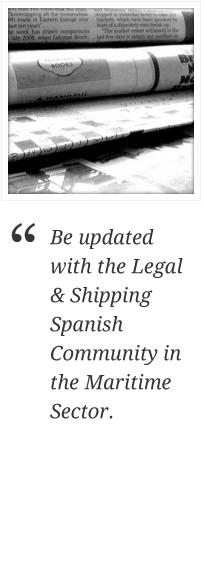August: CIRCULAR 3A/2005
SPAIN: REDUCING THE IMPACT OF FUTURE OIL SPILLS AND OTHERS – THE NON-COMPLIANCE OF THE NEW MEASURES COULD RESULT IN VESSEL’S DETENTION
CABO DE GATA NEW TRAFFIC SEPARATION SCHEME. The Spanish Ministry for Development, through its permanent representative at the International Maritime Organization’s Sub-Committee on Safety of Navigation, has obtained approval for the amendment to the existing Traffic Separation Scheme (TSS) “Off Cabo de Gata†in the south-east of the Iberian peninsula, an area of high traffic density (OMI 51 – 6 to 10 June 2005).
The amended routeing moves ships away from the Spanish coast and out of the Spanish waters, between 17 and 21 miles South of the cape, in order to avoid collision with fishing vessels in that area and also to protect the Cabo de Gata Natural Park in Almeria province (Andalucia, Spain).
This amended traffic separation scheme will be submitted for adoption to the IMO Sub-Committee’s Assembly taking place in May 2006 and it is expected it will enter into force the 1st of December 2006. Details of the traffic lanes can be seen at the website of the Spanish Ministry of Transport, www.mfom.es.
NEW TRAFFICE LANES FOR SHIPS TRANSITING THE PARTICULARLY SENSITIVE SEA AREA OF THE CANARY ISLANDS. The Spanish Ministry for Development, through its permanent representative at the International Maritime Organization’s Sub-Committee on Safety of Navigation, has obtained approval for new “Associated Protective Measures†in the designated Particularly Sensitive Sea Area (PSSA) of the Canary Islands, an area particularly sensitive and vulnerable to shipping disasters (OMI, 51 NAV 2005).
These measures give the green light for the creation of further Traffic Separation Schemes between the islands of Tenerife and Gran Canaria and between Gran Canaria and Fuerteventura. They also establish five navigational zones to be avoided by ships in transit throughout the archipelago on the grounds of their great natural and biological wealth, as well as a mandatory reporting system for ships in this area. Tankers carrying heavy fuels near coastlines will be therefore monitored in this area.
The new measures, which details can be seen at the website of the Ministry of Transport, www.mfom.es, will be submitted for adoption to the Assembly taking place in May 2006 and it is expected they will enter into force the 1st of December 2006.
With the creation of further Traffic Separation Schemes, they presently exist the following Traffic Separation Schemes in Spain controlled by the Spanish Marine Safety Agency (SASMEAR) through the regional (SAR centres): Finisterre in Cape Finisterre TSS, Tarifa in Gibraltar Strait TSS, Almeria in Cabo de Gata TSS and Las Palmas in Canary Islands TSS.
THE MINISTRY FOR DEVELOPMENT CONTROL TANK VESSELS SAILING IN SPANISH NORTHERN WATERS. The Spanish Ministry for Development, through the General Directorate of the Merchant Marine (GDMM) and the Spanish Marine Safety Agency (SASEMAR), has implemented, from 1st July 2005, the mandatory ship reporting system WETREP, which was approved by the IMO in December 2004, in the Western European Particulary Sensitive Sea Area (WE PSSA), which includes the Spanish waters off the Galician and Cantabrian coasts. The system affects all oil tankers over 600 tonnes dwt carrying heavy fuel, which will have to identify whilst sailing in northern Spanish waters, and will allow the adoption of preventive safety measures whilst the vessel is in the PSSA.
It should be noted that all those vessels not complying with the mandatory reporting of transit in Spanish waters or with the Traffic Separation Schemes could be detained and the lack of reporting or the non-compliance with the requirements of the TSSs could be typified as an administrative infraction as per our Spanish Ports and Merchant Marine Law 27/1992 which regulates Sanctioning Proceedings, Infractions and Fines. The only way to release the detention of the vessel would be by providing a guarantee which up to date does not include Club Letters.

